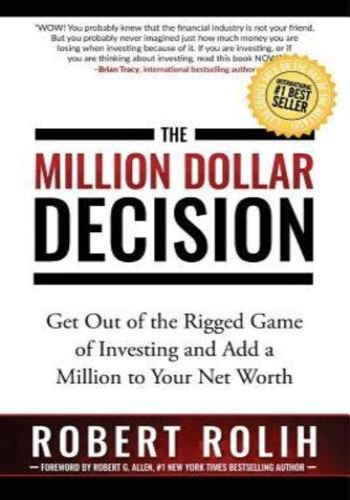"If you care about your financial future and if you don't want to get ripped off by the financial industry, read this book now." (Daven Michaels, NY Times bestselling author)
Are you investing with the help of financial advisers, money managers or bankers? Are you thinking about investing, but you don't know where to start and who to trust in the financial jungle out there? Are you a busy professional who hates financial mumbo-jumbo and doesn't have time for investing? Are you scared to invest because it seems too overwhelming and complex?
The BAD news is that most financial advisers, gurus and other financial "experts" are out there to legally steal your invested money. That is why a typical investor loses more than one million dollars in his/her investing career (see pages 172-175).
The GOOD news is that you can smile now because finally there is a simple solution. Robert Rolih will share with you the details and secret subtleties that will enable you to fire your financial adviser, take control of your money and investments and outperform the pros - while spending only a few hours per year.
By reading The Million Dollar Decision, you'll finally discover how to make sure your invested money works for you and not for the financial industry:
- The Six Dark Forces of Investing if you don't learn what these forces are, you will never be able to invest profitably. Get to know them, and Darth Vader will seem like a good guy to you.
- The Commission Camouflage Effect learn how the financial industry takes most of your future returns - without you even being aware of it.
- The most important formula of your financial life: Financial Success Formula. This is an entirely new philosophy on personal finance and investing that will, quite literally, save you financially. If you have adult children, you will want to share it with them right away.
- Financial safety with the A.R.M.O.R. Formula even if you are the kindest and most positive person, something unforeseen can happen that turns everything around. Use this simple formula to prevent financial disasters from disrupting your financial security.
- Selecting the right financial products and minimizing risk: stocks, bonds, mutual funds, index funds, gold, silver. Get a clear answer on how to make the right choices. Investing for retirement or to grow your wealth simply can't get easier!
- How to beat Richard Branson's speed of creating wealth with one smart move? No hype. Just facts. This will come as a total surprise for you.
- Short-Term Investing Slaughterhouse: learn the sad truth about short-term trading. If you are thinking about trading stocks, Forex, binary options and other instruments, this chapter will be a life saver.
- How to make the Million Dollar Decision, get out of the rigged game of investing and add a million to your net worth in just a couple of hours per year?
"Being a doctor of medicine I have never enjoyed books about personal finance and investing. That was the first book that I not only read from cover to cover, but used it to change my investing plans. I cannot thank you enough for the information in your book. nDylaan Dowlati, MD, MBA-HCM
"I thought I knew just about all there is to know about investing. But I put my emotions aside and listened to Robert's logic and I was stunned! I took immediate action to bring my investments in line with his recommendations. I believe this book really will be a Million Dollar Decision for me!" -Ralph Brogden, bestselling author






